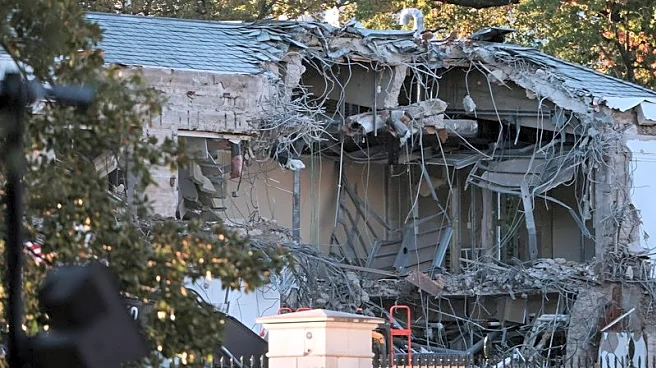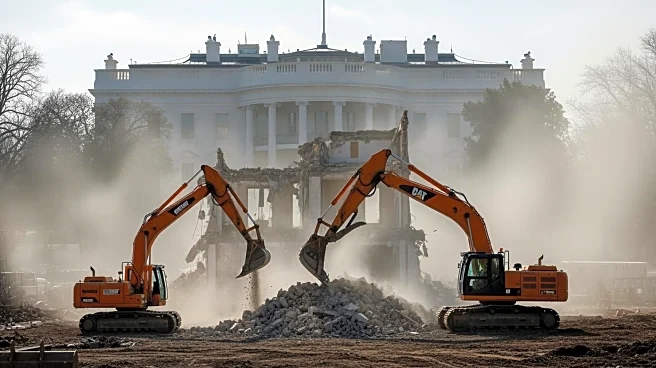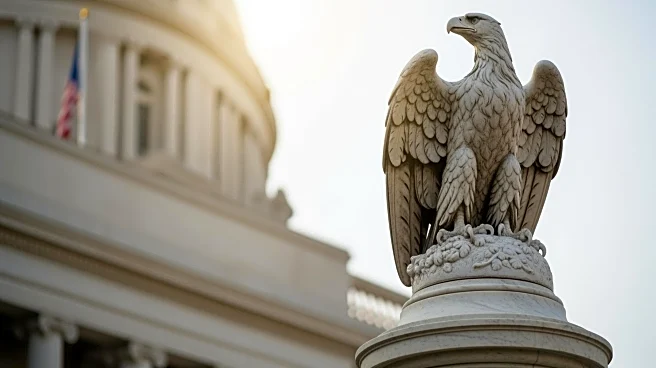What's Happening?
The White House has initiated the demolition of part of the East Wing to make way for President Trump's new ballroom. The project, announced by Trump, aims to modernize the East Wing and construct a ballroom with
a capacity of up to 900 people, surpassing the initial plan of 650. The construction is funded privately, with Trump and donors contributing to the estimated $250 million cost. The ballroom is intended to host large events, addressing the limitations of current White House facilities. The project marks a significant change to the White House complex, with historical considerations being addressed by consulting relevant organizations.
Why It's Important?
The construction of a new ballroom at the White House represents a major architectural change, potentially impacting the historical integrity of the complex. It highlights the influence of private funding in public projects, raising questions about transparency and oversight. The ballroom's capacity to host large events could enhance the White House's role in diplomatic and state functions, potentially increasing its prestige. However, the project has faced criticism from lawmakers who argue that such changes should be subject to congressional review, reflecting broader concerns about executive power and accountability.
What's Next?
The completion of the ballroom is expected before the end of President Trump's term in January 2029. As construction progresses, stakeholders such as the National Park Service and White House staff will continue to be involved in preserving the site's historical significance. The project may prompt further discussions on the role of private funding in government projects and the balance between modernization and historical preservation. Lawmakers may seek to introduce measures to ensure greater oversight of similar initiatives in the future.
Beyond the Headlines
The ballroom project could set a precedent for future administrations regarding private funding and structural changes to the White House. It raises ethical questions about the influence of private donors in public spaces and the potential for such projects to alter the historical narrative of national landmarks. The initiative may also reflect broader cultural shifts towards larger, more extravagant state functions, influencing how the U.S. engages with international leaders and conducts diplomacy.












